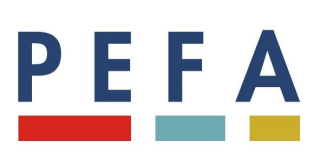

Posted by Lewis Hawke[1]
So, you’ve heard of PEFA, and maybe TADAT, FTE and DeMPA. But what about EITI, EU-FB, GACAP II, HTS or MiGestion? The PEFA program has just released a consultation draft report that provides a stocktake of public financial management (PFM) diagnostic tools[2] under three main categories:
- Broad diagnostic or analytical tools covering all aspects of the PFM system;
- Tools focusing on individual PFM elements, institutions or sub-systems; and
- Tools used by development partners to assess fiduciary risk.
The stocktake was limited to tools that were in common usage internationally in 2016 but still managed to identify 46 different products. There were 12 broad, government-wide diagnostic tools, 25 tools covering a wide range of sub-systems and institutions, and 9 tools focusing on fiduciary risks to country financial systems.
This is the third PFM tools stocktake report[3] produced by the PEFA program. The previous reports were completed in 2004 and 2010. There has been a net increase of 13 tools since 2010, from 33 to 46. Among the broad PFM diagnostic tools, three entirely new tools have been launched (GIFT Principles of Fiscal Transparency, the World Bank’s Rapid Assessment and Action Plan to Improve Service Delivery in Subnational Government, and the Bank’s MiGestion – Institutional Capacity Diagnostic in Sub-National Government). Two tools have been discontinued (the World Bank’s CFAA and the Commonwealth Secretariat’s PFM Self-Assessment Tool). The discontinued tools focused on central government and had the greatest overlap with the PEFA Framework. Consequently, there has been some consolidation of broad diagnostic tools used for national governments.
The expansion of tools has been most noticeable for those which focus on individual PFM elements, institutions or sub-systems. Over the past six years this group has grown from 17 to 25 tools with a concentration of new tools in revenue administration, for which there are now 10 tools. Nevertheless, areas of PFM not yet covered by specific diagnostic instruments include international internal control standards, the assessment of extra-budgetary operations, treasury management, and integrated human resource and payroll management systems.
The influence of the PEFA methodology on the design of diagnostic tools is suggested by another development. Since 2010, two new tools have been launched with assessment and reporting frameworks almost identical to PEFA, namely TADAT and SAI-PMF. Other recent tools take a quite similar (though not identical) approach, including the FTE and PIMA. This adds to the number of tools identified in 2010, such as DeMPA and MAPS, which also used a similar approach.
The PEFA Secretariat recognizes that a desk review such as this runs the risk of not identifying all important features and nuances of tools maintained by more than 20 institutions. Consequently, we are seeking comments, refinements and updates to the consultation draft by November 20, 2017. Once comments have been reviewed, and the draft revised, a final version will be published.
[1] Lewis Hawke is Head of the PEFA Secretariat. The Public Expenditure and Financial Accountability (PEFA) program is a partnership of the World Bank, the European Commission, the UK Department of International Development (DFID), the Swiss State Secretariat for Economic Affairs, the French Ministry of Foreign Affairs, the Norwegian Ministry of Foreign Affairs and the International Monetary Fund.
[2] PEFA Secretariat, Stocktake of PFM diagnostic instruments 2016, October 2017. https://pefa.org/news/stocktake-pfm-diagnostic-instruments-2016-consultation-draft
[3] The two previous stocktake reports can be found on the PEFA website at https://pefa.org/research-impact
Note: The posts on the IMF PFM Blog should not be reported as representing the views of the IMF. The views expressed are those of the authors and do not necessarily represent those of the IMF or IMF policy.







